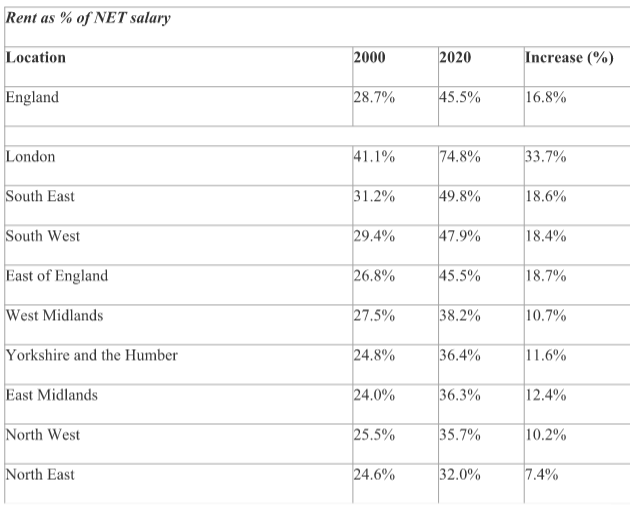The past decade has seen many companies that converge property portfolios, hospitality and travel benefit from an unprecedented pace of growth.
Landlords have long been sat at the head of the table, with the market enabling them to best capitalise on and diversify short-term rental demand across their portfolios. As we head into 2020, however, the market will see a notable shift to better ensure tenants are also given a seat at the table. With change comes complications, though if armed and prepared, the result can usher in a new and improved trajectory.
Regulatory changes are poised to shake up the UK property market in the year ahead, heralding in a new benchmark for the future of landlords. To help assess how to survive, thrive and turn a profit in 2020 and beyond, here is a deep dive into the regulation that lies ahead…
Tenants to be freed from fees
From June 1 2020, The Tenant Fees Act will apply to all private shorthold tenancies, including those entered before June 2019 when the Act was first introduced. This legislation was designed to restrict the type of fees landlords and letting agents could charge tenants, meaning costs such as check-out fees are no longer enforceable by law.

The push towards banning letting fees comes as no surprise given that, for some time now, tenants have been tasked with paying fees that solely benefit landlords. A key focus for landlords and letting management services should be to ensure that clauses in older agreements will accurately reflect shorthold tenancies. Another core component of this Act for landlords to take note of involves deposits now being capped at five weeks’ rent, or six weeks’ rent on tenancies where the annual rent exceeds £50,000. While existing agreements are still applicable, landlords will need to
reduce deposits to be in line with legislation before the tenancy renews and certainly before June 1.
Bringing all deposits in line with legislation well in advance will help landlords avoid fines ranging from £5,000 to £30,000. Failure to comply isn’t in your back pocket’s best favour.
Existing letting management services will turn to tech solutions to ensure landlords are able to effectively monitor and adapt to regulatory changes.
Fit for a king
Falling short on quality is no longer an option. While The Homes (Fitness for Human Habitation) Act is not new to landlords, it will see a heftier addition on March 20 this year. All existing tenancy agreements will now become subject to the Act. While buy-to-let properties may not have traditionally been the focus under this new Act, they will have to ensure they meet the correct standards or risk facing a claim larger than the required repair.
Up until now, the ability to get away with significant flaws or substandard offerings was easier, particularly in London where demand for short-term lets is especially high. With the reality now changing course, landlords must pledge to improve the quality and consistency of tenant experience.
With the spotlight now sharply on landlords to deliver, the pressure of looming deadlines and repair requirements can be a struggle to manage alone. With the help of an integrated management service, advice and support will provide not only how to adhere to the Act but how best to optimise space and the repairs able to stand the test of time and taste.
Efficient energy or else
From April 1 2020, The ‘Minimum Energy Efficiency Standards’ (MEES) will see some additions come into effect. Landlords with residential properties let on existing shorthold or fully assured tenancies must improve their rating to E- by April 1 otherwise an exemption is filed.
The penalties for renting out a property that fails to meet the rating for up to three months will be met with fines up to £5,000 and those over three months may be fined up to £10,000. It won’t stop there, those that provide false or misleading information will also face a £5,000 fine. It is important however to bear in mind that landlords can still legally avoid the regulations if certain special circumstances apply. For one, if landlords can prove that installing energy efficiency measures reduces the value of their property by 5% or more, they can be exempt.
A six-month respite is also on the table for those that have recently become the owner of a rental property.
Buy-to-let set for a bright future
As the introduction of more tenant-friendly regulation picks up momentum, landlords will have to adapt to become more strategic in their portfolio approach. Though this doesn’t necessarily mean the division between landlord and tenant needs to further widen. Instead, it can be an opportunity for all parties to see what can be done to make the market more attractive.
Landlords with multiple properties can effectively tap into or enhance their portfolio in this new landscape with a well-targeted and responsive management service to enable them to optimise their yields across short, medium and long-term lets. Change might be on the horizon, but one thing is for sure, the next decade will see a healthier balance of treatment between tenants and landlords. Property players will move towards a new chessboard strategy and the resources available to help navigate that change in growth are raring to go.










